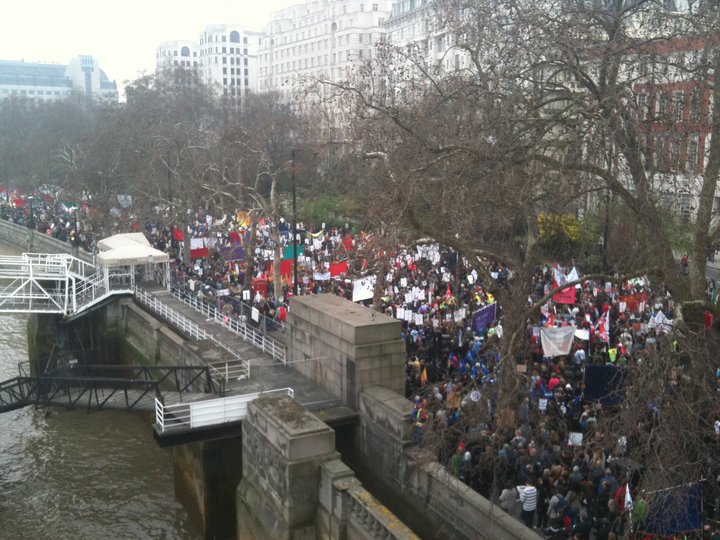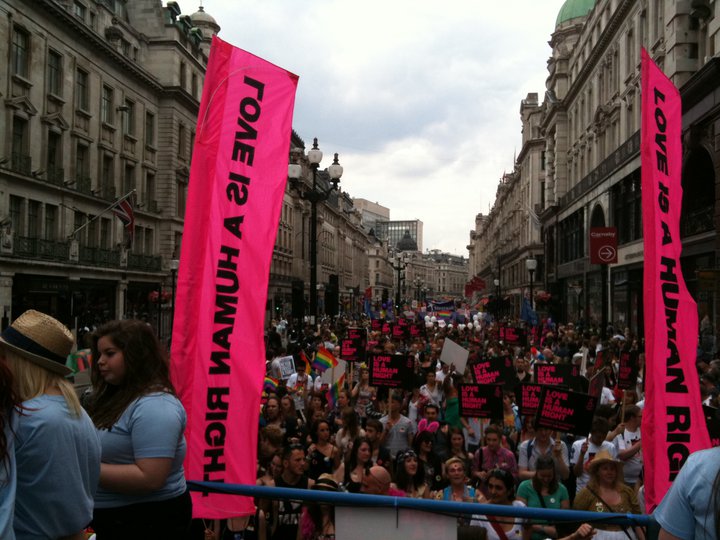
I visit
the Extraordinary Chambers in the Courts of Cambodia (ECCC) which are held in a white ex-army base near Phnom Penh airport.
The viewing gallery is nearly full, as we
dash in late the hundreds of Khmers in the audience turn to gaze at the barangs
filing in; adding to their bemusement of the whole show. A public programme
connected with the procedures busses in groups of Cambodians:
children; old folk; monks; from across the provinces as part of a reconciliation process. I long to be able to speak Khmer and ask them
their impressions and I really hope that despite the process being so alien
that there is some feeling of reconciliation for those older people who have
lived through the terrible history of the country.
The court proceedings take place behind
glass screens, a grand affair with so many people, lawyers, clerks, computers,
interpreters. Every Cambodian lawyer is
shadowed by an international counterpart and there are scores of interns too. Displaced
behind the glass the audience are provided with headsets with options in Khmer,
English and French. It is quite exciting, like a film, a familiar scene from
television, war hearings in The Hague etc. As I am taking it all in we stand
as the five judges file in.
I have an information pack which has an
excellent level of detail about the Khmer Rouge and the whole proceedings, so I
sit down to multi-task, read the notes, take note myself of proceedings and
listen to what’s going on. The first lawyer to speak is a young dark haired
American man, one of the defence counsel, Andrew Ianuzzi, right from an
American court room drama. He starts proceedings by complaining that during the
previous day’s hearings Judge Cartwright had been seen to be mouthing “blah, blah, blah” while he was
speaking. The matriarchal white haired Dame Cartwright, a leading judge from NZ
quickly hides her surprise and composes herself.
Asked by Nil Nohn, the President of the Chamber, to repeat the totally inappropriate and surreal reference to
the Cambodian court several times, Nohn finally
dismisses Ianuzzi quite
brilliantly: “We
are not aware of what you’re talking about, our knowledge is not as high as
your’s. Be mindful that counsel is talking to the bench rather than talking to
yourself.”
The proceedings then move onto the cross
questioning of an old guard. I can’t quite follow the story here but gather he
was worked as a guard in one of the Khmer Rouge camps, at one point he repeats
one of the old regime’s freaky slogans:
“Disclosing
secrecy will lead to death. Keeping secrecy will keep us 80% victory.”
Through the alien legal speak there is some
familiarity with the slogan amongst the Cambodian audience and I’m
aware of a ripple of titters.
The defence of secrecy seems to pervade the
whole tribunal. The regime was clearly run on secrecy so ignorance seems to be
an easy fall-back position for defendants and is being used repeatedly through
the cases tried. At the back of the court
room the 3 elderly defendants of this Case (Case 002) can be seen cowering and doddering, often being
wheeled in and out to the bathroom. It’s
bizarre. After about two hours of seemingly inactivity the court is adjourned
and will go into closed session.
A Cambodian friend tells me before I attend
the tribunal that it is all a long dragged out game and already I can see what
he means. It is difficult for me to judge the whole process but a few things
stand out. It is 33
years since the Khmer Rouge were overthrown and it took until 2003 to start
setting up a tribunal. Since starting to
set up in 2003, the tribunal has cost nearly $150
million. In that time one man has been convicted, possibly the most evil man
after the KR leader Pol Pot who died in the 90s: Kaing Guek Eav, alias Duch, who was the
Chairman of the notorious S-21 prison. Duch received a sentence of 35 years,
then reduced to 30 years before being increased to a life sentence. I’m not
quite sure why it took 3 trials before an appropriate sentence could be reached
for a man responsible for the deaths of some 20,000 people.
Later I visit Tuol Seng, the S-21 prison which is maintained as a museum. The KR took over a secondary school in the
centre of Phnom Penh turning it into an unimaginably horrific torture
centre and detention centre, today still you can see the gallows, metal beds,
shackles and tens of
wooden cells where prisoners were kept in cells 1 metre
by 2 metre lying shackled down, starving, beaten and broken. Photos of the
prisoners taken on their arrival to the camp are displayed, rows of haunting
images of boys, mothers and babies, old ladies…faces of confusion, bemusement,
sadness, fear and sometimes defiant smiles. I recognise the Khmer people from the people
I know today.
After being held in S-21 prisoners were
taken to the Killing Fields by night, having being told they were going to a
new home. Loaded off trucks, one by one, people were made to kneel by pits and
bludgeoned to death under florescent floodlights to the sound of propaganda
music which blared out to drown out their screams. The most heart wrenching and
difficult part of visiting the Killing Fields is the Killing Tree where KR
soldiers (mostly boys themselves) smashed babies and children to death in front
of their mothers.
This was one of many such sites
across the country. During the horrific period of 1975-1979 some 3 million
people of a population of 8 million died of torture, execution, starvation and
disease. The regime evacuated the capital in a 3 day period and the whole
population were displaced and made to work the land for rice cultivation and
kept on basic rations, families split up and people indoctrinated. Following the overthrowing of the
KR, Cambodia was then occupied for ten years by the Vietnamese. Even today the
country is totally corrupt and far from a truly functioning democracy.
It’s
unfortunate that there cannot yet be justice or closure on the Khmer Rouge
period. Case 002 in the tribunal drags on while foreign lawyers delay
proceedings quoting Dr Dre. A third and fourth case are under investigationhowever due to alleged government interference two international investigatingjudges have resigned within a recent 6 month period. I’ve heard it suggested that these further
cases may bring out connections with current politicians and governmental
officials who are ex-Khmer Rouge cadres. To this end a tribunal held in another country could have avoided such interference.




